About this blog: Sikkim Silk Route tour is one of the most famous attractions in East Sikkim. Zuluk (also spelled as Dzuluk) was once an important stop on the Ancient Silk Road. Today Sikkim Silk Route is known for its clear and gorgeous views of the mountains, the dizzying zig-zag roads and hairpin bends and quaint villages on the route. Read this blog about Sikkim Silk Route Guide and get information on how to reach, where to stay, attractions and the tentative cost of Silk Route Tour.
We had explored Sikkim to a great extent. However, the Silk Route in East Sikkim seemed to elude us for a long time. While we explored the high altitude lakes, offbeat hamlets and the monasteries of Sikkim, we were yet to experience the famed hairpin bends of Zuluk. Finally, it was an impromptu decision that had us boarding the Darjeeling Mail to reach New Jalpaiguri and finally go for the Sikkim Silk Route trip.

The Sikkim Silk Route tour can be started from either New Jalpaiguri (NJP) in West Bengal or Gangtok in Sikkim. We had decided to start our journey from NJP and end it in Gangtok and stop at Aritar, Zuluk and Nathang Valley for the night. Read on to know more.
Sikkim Silk Route in Visuals
History of Sikkim Silk Route
The Silk Route in East Sikkim that is open for the tourists to explore is actually a part of the ancient Silk Road. The Ancient Silk Road was actually a huge network of ancient trade routes that stretched from Asia to the Mediterranean traversing China, India, Persia, Arabia, Egypt, Greece and Italy. This route was formally established during the Han Dynasty of China in 130 BC. It linked regions of the ancient world in commerce between the periods of 130 BCE-1453 CE.
The Sikkim Silk Route as we see today was only an offshoot of the Ancient Silk Road. Infact, it is only a small part of the ancient silk route that connected Lhasa in Tibet to Tamralipta in West Bengal. Yes, Lhasa was once the hotspot of ancient trade and commerce. The nearest sea port to Lhasa was at Tamralipta, or present day Tamluk in West Bengal.
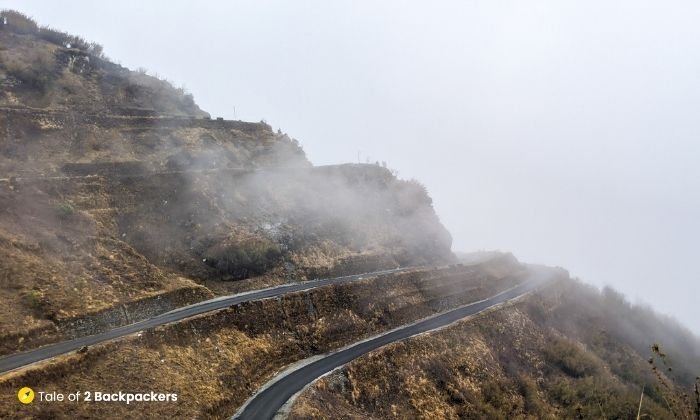
This entire Silk Route covered a distance of 900 km from Lhasa to Tamralipta starting from Chumbi Valley in Tibet, going across Nathu La and then through the hills of East Sikkim before finally entering into the plains of Bengal. The Chumbi Valley is connected to Sikkim to the southwest via the mountain passes of Nathu La and Jelep La. It is the thin slice of land between India and Bhutan that is known more for the Doklam issue between India and China.
A lot of commodities were traded along the Silk Road. The Chinese Silk was considered one of the luxury items and was traded from the east to the European countries. Other items included textiles, tea, spices, dyes, medicines, glassware, fruits and even camels. Apart from commodities knowledge, ideas and culture were also exchanged along these old routes. Well, the Silk Route is not of much significance today because of the geo-political boundaries.
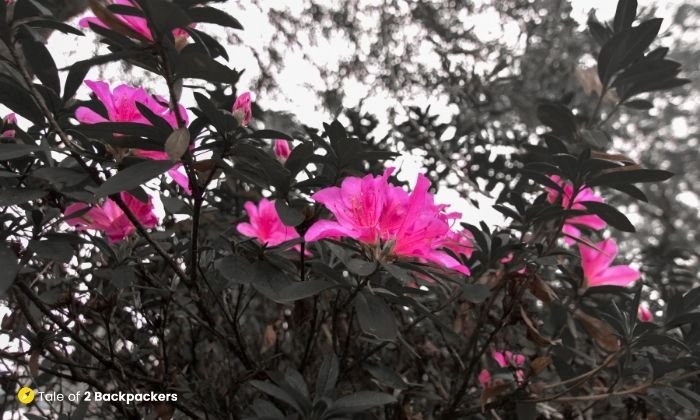
Silk Route Sikkim Travel Guide
The Indian part of the Silk Route is open for tourists from Rongli to the Nathula Pass. The region is no doubt historically interesting, but it is the stunning vistas of the route that attracts tourists to this part of East Sikkim.
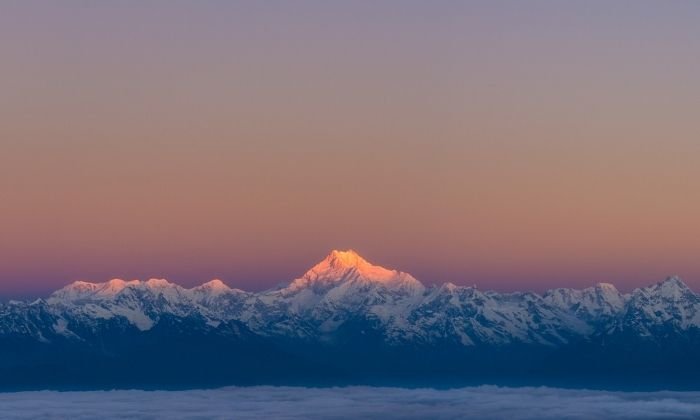
Although the Silk Route gets a lot of tourists from Bengal during the months of October (mainly due to the Durga Puja holidays), this part of Sikkim is relatively offbeat to tourists from other parts of India. There are actually no major towns enroute the Silk route circuit. Homestays are available all throughout the Silk Route in Sikkim that provides basic amenities to the tourists.
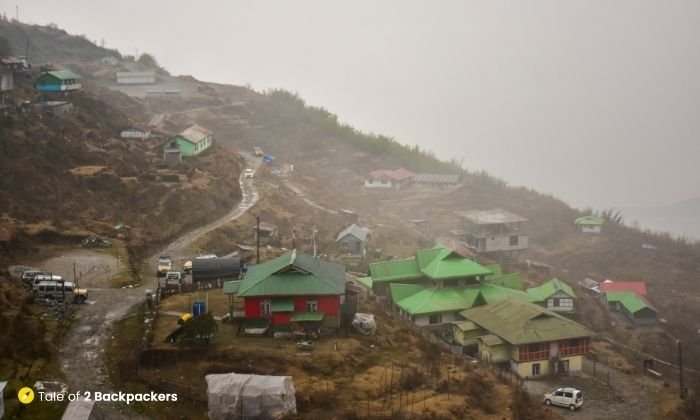
The Sikkim Silk Route circuit basically starts from Rongli, located at an altitude of 5000 feet near Bengal-Sikkim border. You might have seen Sikkim Silk Route packages mentioning stays at Rishikhola, Icchey Gaon or Sillery Gaon. Well, these places are located in West Bengal and are technically not part of the Silk route. These beautiful villages are located at the foothills of the route and you can stop at any of the villages to break your journey.
Our Itinerary
As I mentioned above, we started from NJP for our Silk Route tour. Here is a detailed itinerary of our Sikkim Silk Route Tour.
Day 1: NJP – Aritar (110 km)
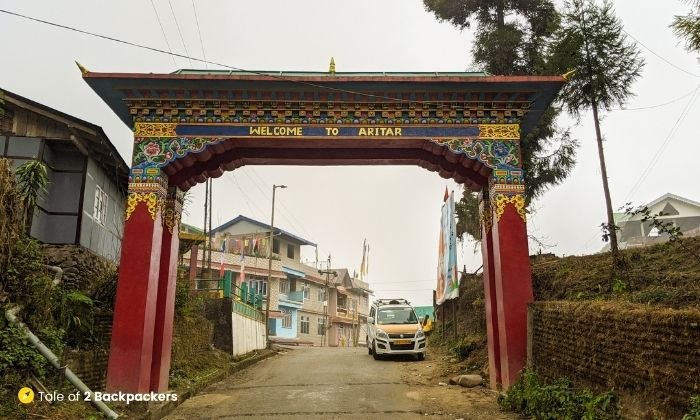
We spent our first night at Aritar, a beautiful hamlet of Sikkim. Aritar is also a slight detour from the actual ancient Silk Route, located at an altitude of 4000 feet.
Our train to NJP was a bit late and we reached at around 10 AM. We had already booked a car for the entire Silk Route trip. The car was waiting for us at NJP and we started as soon as we reached there. It took about 4.5 hours to reach Aritar after crossing the Rangpo Checkpost at Sikkim border. By the time we reached Aritar, it was drizzling.
We checked into our homestay, had our lunch and then went to explore the village on foot. As it was already late afternoon, we decided to rest for the day. We decided to explore Aritar the next day.
Alternative Stop: Mankhim
Day 2: Aritar – Zuluk (42 km)
Exploring Aritar

We started early from Aritar. The weather was a bit dampener with dark clouds hanging over us. Aritar is known for Lampokhri Lake, an artificial lake surrounded by hills covered with pine trees. There is also a small monastery near the lake. You can also go boating at Aritar Lake.
There is another monastery on the hilltop by the Aritar Lake. There is a trekking trail from the side of the lake leading to the Mankhim Top viewpoint and the local monastery. You can also reach the monastery by car. There is also an old British dak bungalow at Aritar.
Mankhim

Mankhim is located about 3 km from Aritar and is famous for the Mankim Top viewpoint. A forested trail through a rough and muddy road actually leads to the Mankhim Top. Aritar Lake is located just at the foothills of the Mankhim top.
Mankhim is a small village located at the top of the hill inhabited by the Rai Community. There is a temple and a monastery at Mankhim. From the Mankhim Top, you will get a panoramic view of the Kanchenjunga ranges at the horizon. This is, perhaps, the best thing about the Sikkim Silk Route. Through the entire route, you will get viewpoints from where you can get unobstructed views of the snow-capped mountains.

You will also get a view of the Lampokhari Lake from the viewpoint. There are several places on the trekking trail from where you will get great views of the lake.
There is a homestay just located a few metres from the Mankhim Top. It is a great place to stay, mainly for the views and the hospitality.
Note: Both Aritar and Mankhim are located before Rongli. So you do not need a permit to visit and stay at these places.
The Que Khola Falls is located just 2 km from Mankhim. It falls on the way towards Rongli. Que Khola is a small waterfall on the road side having a few tea stalls. You will get tea, coffee, momo and snacks at these stalls.

Rongli
Rongli was the next stop. This is an important town in East Sikkim. This small town is surrounded by greenery and the Rangpo River flows by the town.
Rongli is an important stop in the Silk Route because you have to get your mandatory permit from here. You can get your ILP (Inner Line Permit) from the SDPO Office for travelling beyond this point to Zuluk and Nathang Valley. We too stopped at Rongli to get our passes.
You can also stay at Rongli for the night. The town is quite peaceful and there are a number of forest trails from here.
After we got our permits from Rongli, the actual journey through the Silk Route started. The roads were smooth and we quite enjoyed our drive amidst the beautiful scenery of Sikkim. Just imagine, centuries ago, caravans laden with expensive goods would commute along these roads! That is definitely a goosebump inducing feeling! After Rongli, the increase in altitude starts.
Lingtam
The next village on this route is Lingtam. The permits are checked at the Lingtam Checkpost. This is a small village and a few homestays are found here. You can stop here for some time, take a few photographs before travelling further.
Padamchen

Padamchen, located at 8000 ft is one of the most beautiful villages in Sikkim Silk Route. It is only 15 km from Rongli and is surrounded by greenery all around. Padamchen has pleasant weather all throughout the year and the village offers a sweeping view of the surrounding valleys.
Padamchen is a good place to stay for the night at Sikkim Silk Route. There are a number of homestays in Padamchen that offer all the basic amenities for tourists.

Padamchen has a few walking trails in the adjoining forests. If you are lucky enough, you might see a few Himalayan birds or even the elusive red panda.
We stopped at Padamchen for some time and then proceeded towards Zuluk, our final destination for the day.
Zuluk

The actual fun started after we crossed Padamchen and headed near Zuluk. The hairpin bends, that the Silk Route in Sikkim is so famous for, starts before Zuluk. After crossing a few bends, we finally arrived at Zuluk.
Zuluk is probably the most famous stop on the Sikkim Silk Route. And Zuluk also happened to be one of the major transit points in the past as well.
Located at 10000 feet, Zuluk is a small settlement on the Himalayan hillside. The place also has a huge army camp on the hill top.
Zuluk is known for its picturesque mountain views. The view of the sunrise from Zuluk is also quite breathtaking. During the spring, rhododendrons bloom in the region making the place a riot of colours. Being at a high elevation, Zuluk is often covered by mist and clouds. This was what we experienced mostly at Zuluk. In our entire Sikkim Silk Route tour, the weather was a bit gloomy with no sunshine. However, mist and clouds also have their own charm!

During the winter months, Zuluk experiences heavy snowfall and the entire region is covered in a blanket of snow.
There is a Shiva Temple at Zuluk that you can visit. Otherwise, it is quite pleasant to walk around the small village.

It was late afternoon when we reached Zuluk. After checking into our homestay, we went out to explore the temple and the area. We walked aimlessly along Zuluk while enjoying the cool mountain air.
Day 3: Zuluk to Nathang Valley (24 km)
This was the curtain raiser day, when we would drive through the famous zig-zag roads of Sikkim Silk Route and view them as well from the Thambi Viewpoint. The viewpoint is also known for its spectacular view of sunrise. However, the weather did not improve and there was no chance of viewing a proper sunrise. So we did not bother to wake up early in the morning to view the sunrise.

If the weather is good and you want to view the sunrise from Thambi View Point, then you have to start quite early in the morning and reach Thambi by 6 AM.
Thambi View Point

Thambi Viewpoint is located about 14 km from Zuluk and it will take about 40 minutes to reach there. At 11600 feet, Thambi viewpoint naturally offers a breathtaking view of sunrise, as well as a majestic view of the loops. See the picture below!
Did you know, there are 32 hairpin bends on the way from Zuluk to Thambi Viewpoint?
About 2 km from Thambi is another viewpoint – Lungthung Viewpoint, located at 12000 feet. This is perhaps the best place from where you can get an all-encompassing view of the Kanchenjunga ranges.
Nathang Valley
Located at an altitude of 13500 feet, Nathang Valley will simply take your breath away. This beautiful hamlet was originally inhabited by Tibetan yak herders. Nathang Valley is known as the “Ladakh of the East” because of its similarities in landscape with Ladakh.
Mountain streams criss-cross the barren landscape of the valley. The valley changes colour according to season. During the spring, rhododendron blooms paint the landscape in a riot of red, pink and yellow hues. Autumn sees the valley in a golden-yellow hue. Winters are totally blanketed by white snow.

Nathang Valley has only about 50 houses inhabited by people of Tibetan origin. There are a few homestays in Nathang Valley. If you are staying at Nathang Valley for the night, carry woolen clothes. The altitude makes the climate quite chilly and the winds are strong as well.
There is a Buddhist Monastery and Krishna Temple that you can visit at Nathang Valley.
Day 4: Nathang Valley – Kupup Lake – Baba Mandir – Gangtok (74 km)
This was our final day. We wanted to travel a bit slow, so we stayed at Nathang Valley at night. You can also opt to carry forward from Nathang Valley towards Gangtok on the same day. There are a few attractions near Nathang Valley that you should not miss:
Eagle Nest Bunker
Eagle Nest Bunker is located a few kilometres from Nathang Valley at an altitude of 13700 feet. This abandoned bunker is perched on a strategic location and gives a panoramic view of the Eastern Himalayas. You get a beautiful view of the Kanchenjunga ranges and other peaks of TIbetan plateau.
Kupup Lake
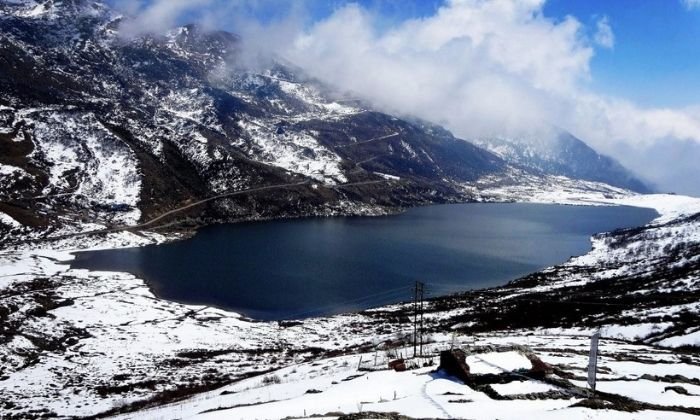
Kupup Lake is quite beautiful and on a clear day, the lake looks clear blue. The lake is also known as Elephant lake, because of its shape.
Memencho Lake
Memencho Lake cannot be reached directly by car. You have to trek downhill about 4 km to reach the lake. Menmecho Lake is a beautiful Lake located amidst conifers on all sides.
Tukla Valley

Tukla Valley is located about 15 km from Kupup. This is a relatively unexplored valley located quite close to international borders. Only a part of the Tukla Valley is accessible to civilians. The place is as charming as Yumthang valley in North Sikkim, if not more.
There is another interesting attraction at Tukla Valley. There is an eighteen-hole golf course called Yak Course located at an altitude of 13025 feet making it the highest golf course in the world.
Old Baba Mandir
This is the actual bunker where Baba Harbhajan Singh resided. You can go inside the bunker and see Baba’s personal effects.
The New Baba Mandir is located about 10 km from the Old one and the Silk route merges with the conventional road towards Nathula and then towards Gangtok.
Tsomgo Lake or Changu Lake

You can stop at Changu Lake or Tsomgo Lake on your way towards Gangtok. Tsomgo Lake is a beautiful lake considered sacred by the locals. The lake is a famous attraction of Sikkim and is visited by a lot of tourists.
Tentative Sikkim Silk Route Itinerary
The minimum days required for the Sikkim Silk Route is 2N/3D. You can extend your trip if you have more days in hand. We will share a few itineraries according to the number of days you have in hand.
Sikkim Silk Route Itinerary for 2N/3D *
- Day 1: NJP – Aritar/ Mankhim
- Day 2: Aritar/Mankhim – Zuluk
- Day 3: Zuluk – Nathang Valley – Gangtok
*You can do this the opposite way as well
Sikkim Silk Route Itinerary for 3N/4D *
- Day 1: Gangtok – Nathu La – Nathang Valley
- Day 2: Nathang valley _ Zuluk – Padamchen
- Day 3: Padamchen – Mankhim
- Day 4: Mankhim – NJP
*You can do this the opposite way as well
Sikkim Silk Route Itinerary for 4N/5D *
- Day 1: NJP – Icchey Gaon/ Reshikhola
- Day 2: Icchey Gaon/ Reshikhola – Mankhim
- Day 3: Mankhim – Zuluk
- Day 3: Zuluk – Nathnag Valley
- Day 4: Nathang Valley – Gangtok
*You can do this the opposite way as well

What is the Best time for the Sikkim Silk Route Tour?
March to May (Spring and Summer)
The best time to visit East Sikkim or Sikkim Silk Route is the spring time between March and May. During this time, the weather remains pleasant. Rhododendrons bloom during the spring.
June – September (Monsoon)
This season is best avoided. Sikkim witnesses heavy rainfall as well as landslides during the monsoon. Roads are treacherous and often get blocked due to landslides. You will also not get good views of the mountains during monsoon.
October – November (Autumn)
Autumn is one of the best times to visit the Sikkim Silk Route. The weather remains pleasant and clear and is good for viewing the mountain ranges.
December – February (Winter)
Winters are usually harsh in the higher altitudes. Snowfall is experienced at Zuluk and Nathang Valley. Views are quite clear during December and January. However, during February, the weather remains foggy and you might not get good views. Also during the winter season, often roads are blocked due to excessive snowfall and you might not be able to complete your trip.
Where to Stay on the Sikkim Silk Route?

The only option to stay at Sikkim Silk Route circuit is the homestays. The homestays are basic in nature having all the basic amenities like comfortable beds, quilts and hot water facilities. Some of the homestays might also have televisions and geysers.
There are hardly any restaurants or eateries at any of the villages apart from Rongli. So the homestays are the best bet to have your meals. The homestays provide tasty and homemade food. Both vegetarian and non-vegetarian food is available. The homestays will provide breakfast, lunch, evening tea and dinner.
Usually, the homestays in the Silk Route circuit usually cost INR 800 – 1200 per head per day including food.

How to obtain permits for Sikkim Silk Route?
You will need Protected Area Permits to travel to Sikkim Silk Route. Permits can be obtained by going to the tourist Centre at Gangtok or contacting a travel agent. You will need an identity proof and passport size photographs to obtain the permit. You also need to keep the original ID proofs handy as it might be asked at the check posts.
Remember, that Adhar Card is not a valid ID proof for obtaining a permit. You can use Voter ID Card, Passport or Driving License to obtain a permit.
The Permits for the Old Silk Route are given out of both Gangtok and Rongli. However, the p[ermits for NathuLa are only given from Gangtok. So if you are entering from Rongli and exiting from Gangtok, then you cannot perhaps visit NathuLa. You can talk to your homestay owner or Driver to know more about the passes to Nathu La.
Currently, you also have to apply for a Travel Card for entering any area of Sikkim. This is an easy process and can be applied online. You have to carry a print out of the filled form with you while travelling to Sikkim.
Permit for Foreigners
While foreigners are allowed to travel in parts of Sikkim, they are not allowed in the Old Silk Route. Foreigners need an Inner Line Permit (ILP) to visit Sikkim. The ILP can be obtained from all Indian Missions, Sikkim Tourism Offices at New Delhi, Kolkata, District Magistrate’s Office of Darjeeling, Siliguri, and Rangpo on the strength of an Indian Visa.
How to reach?
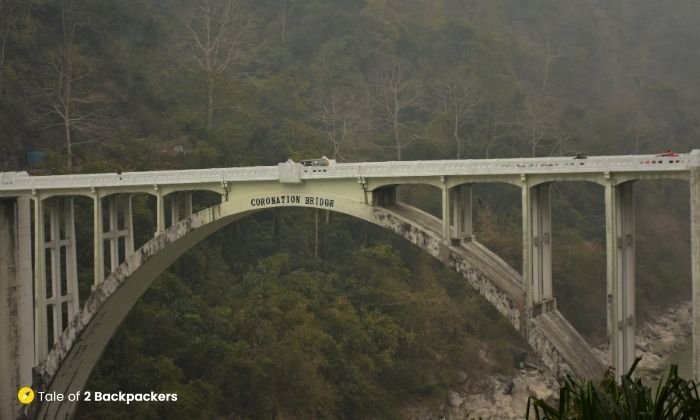
New Jalpaiguri (NJP) is the nearest railway head. NJP is well connected by trains from all the major Indian stations. You can also fly into Bagdogra. You can start your journey from either NJP or Gangtok.
If you want to start from Gangtok, you can reach Gangtok from NJP/Siliguri or Bagdogra. You will get shared sumos from NJP Station and Siliguri SNT Stand to Gangtok. You can also book a car to Gangtok from Siliguri or Bagdogra or NJP.
Sikkim Silk Route Travel Guide (FAQs Answered)
The best time for the Sikkim Silk Route tour is the months of April and May as well as October and November. During this time the climate is perfect for road trip without the wrath of rains and snow. The months of April, May and October are the peak seasons for Silk Route Tour.
You can start your Silk Route tour in Sikkim either from NJP or Gangtok. Starting from NJP, you can stop at Aritar for the first night. On the second day, get your permits for Silk Route from Rongli and then carry on towards Zuluk and Nathang Valley and finally to Gangtok. You can also start from Gangtok and return to Siliguri or NJP.
The height of Zuluk is 2865 m
Zuluk is a small village in East Sikkim and is an important stop in Sikkim Silk Route. Zuluk is beautiful with a handful of settlements, surrounded by moutains and gorgeous views. Zuluk is also famous for the famous hairpin loops of Silk Route. Zuluk has emerged as quite a famous hill station in East Sikkim and is definitely worth your time.
Yes, homestays are available along the entire Silk Route. Most of the villages have homestays these days offering basic and comfortable stays, hot water and good food. The most famous points of stay in Silk Route are Aritar, Mankhim, Rongli, Padamchen, Zuluk and Nathang Valley. You can stay at any of these places as per your plan.
Mobile network works satisfactorily on almost the entire Silk Route, except near Nathang Valley. Vodafone, Airtel, BSNL & Jio network works pretty well. However, internet speed is not that good.
You will find a number of ATMs between Siliguri and Rongli, as well as in Gangtok. Beyond Rongli, there are no ATMs


I hope this blog on Silk Route will help you plan your Sikkim Silk Route Tour. If you have any queries, drop us a comment below or send us an email. If you liked this post and found it useful, please share it with your family friends and neighbours.
Pin it for a later read!

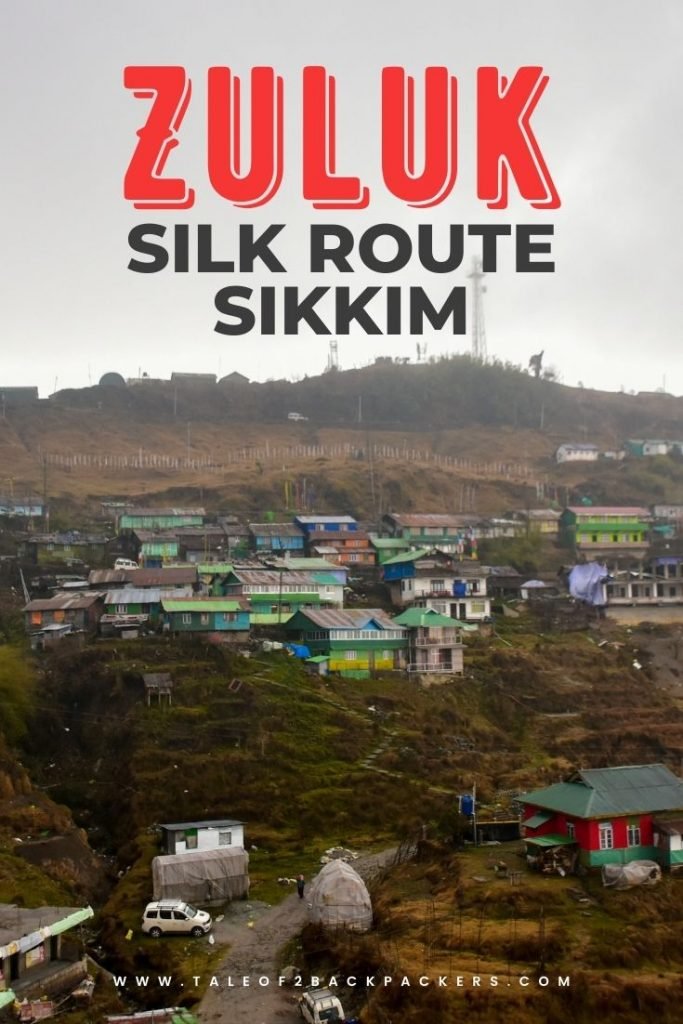





I loved reading your blog post on the Sikkim Silk Route Tour. It was so informative and I learned a lot! I’m definitely going to book my tickets and go on this amazing tour!
Thank you so much!